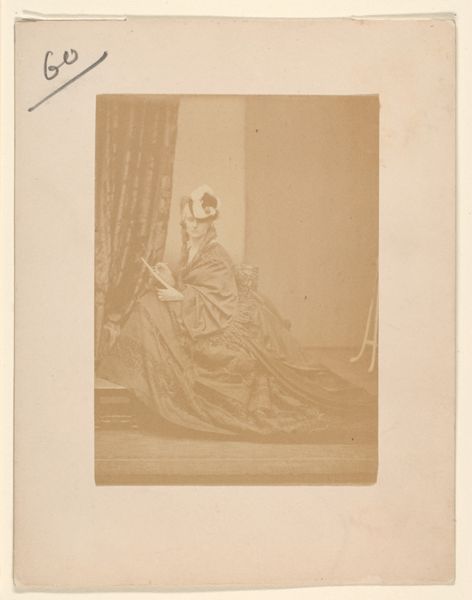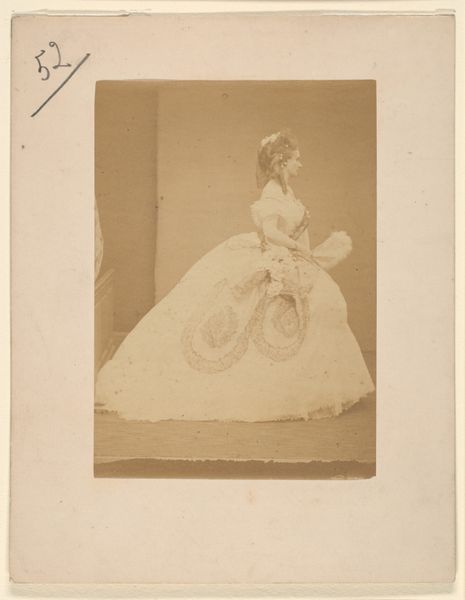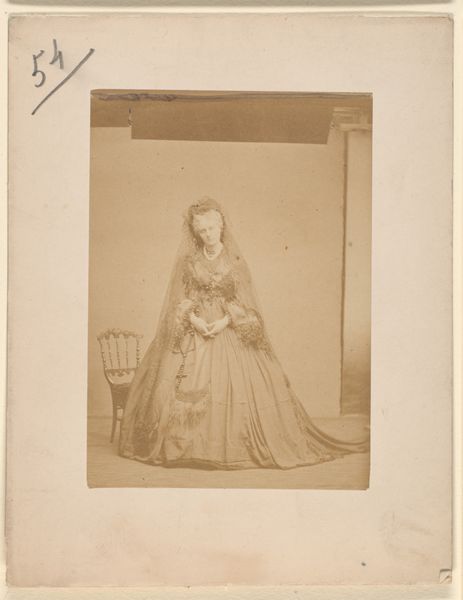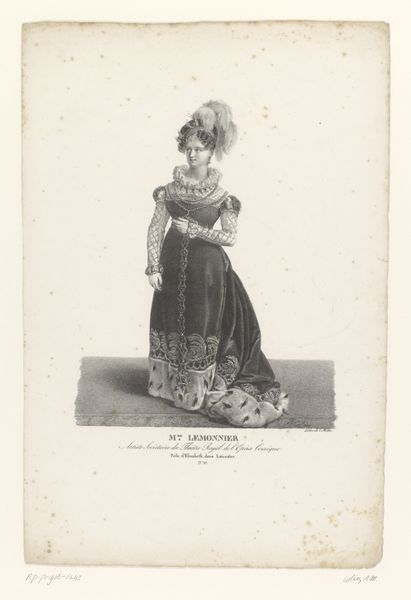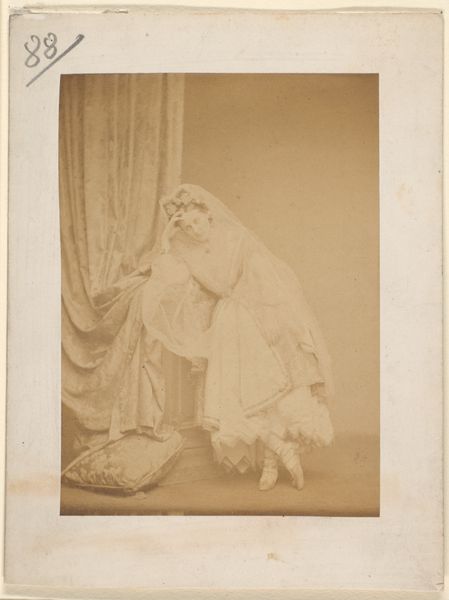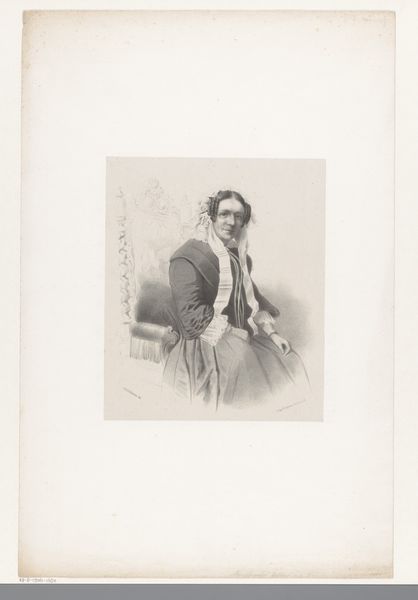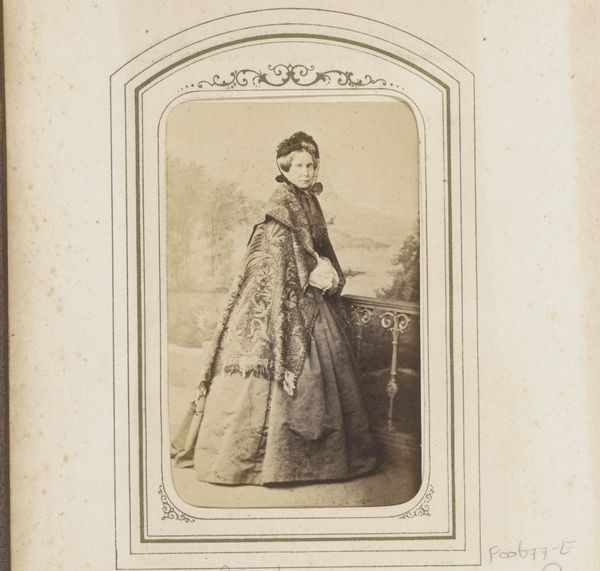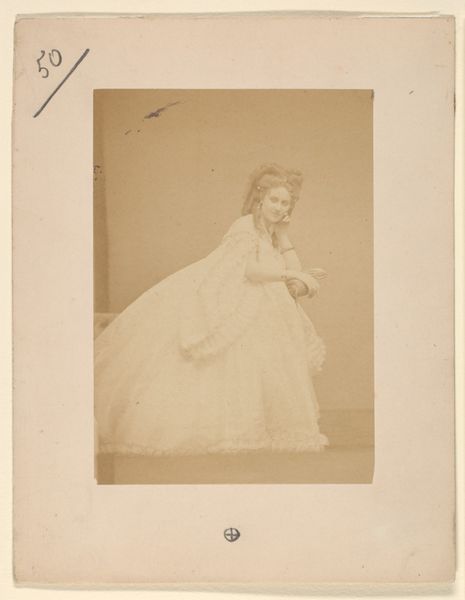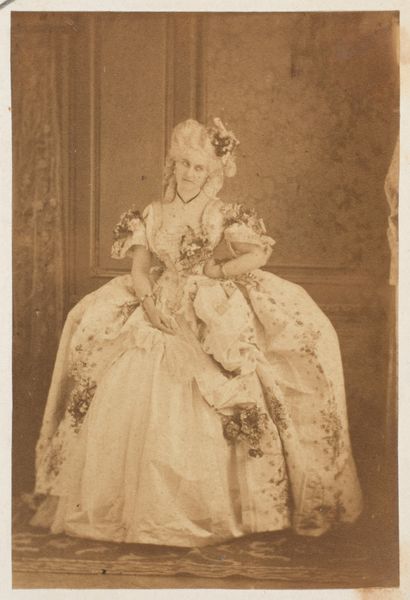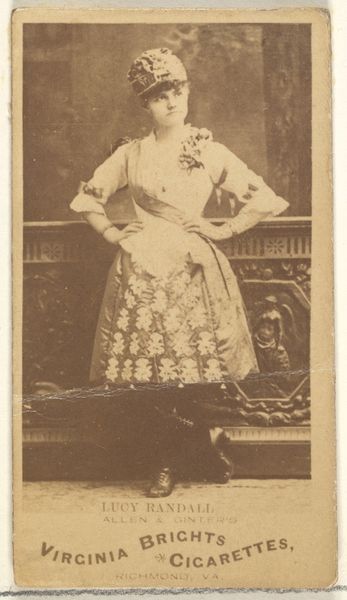
Copyright: Public Domain
Curator: Looking at this, I can’t help but imagine I'm stepping back into a lavish drawing-room, the air thick with perfume. Editor: That's certainly the impression it gives. This is a portrait of Costigliole by Pierre-Louis Pierson, dating from the 1860s, part of our photography collection. And your immediate take is...luxury? Curator: Oh, undeniably. The ruffles! The pose, so deliberately nonchalant... But there’s also a melancholy air. She looks almost trapped, or perhaps just…bored? Is it the angle of her gaze? Editor: Interesting observation, especially within the context of Second Empire Paris. Photography studios became highly commercialized. It was a way for the rising bourgeoisie and aristocracy to visually affirm their status and emulate fashionable trends and even royalty, given Pierson’s close association with the court. Curator: I see it now, like a stage play... Every prop carefully arranged. Yet that hint of melancholy almost feels subversive. Was she making a commentary or am I overthinking it? Editor: These photographic portraits, while seemingly straightforward, offer a complex intersection of private and public identities, the performance of self under societal expectations. Consider the circulation of these images, accessible as keepsakes, cartes de visite. Status isn't merely displayed; it’s made portable, democratized, in a sense. Curator: It is an oddity. You know, in its subtle shadows, it actually reminds me of some paintings from that time! All the tiny folds of fabric. Editor: The connection to painting is not accidental. Pictorialism, which heavily influenced photographers of the time, sought to elevate photography as an art form on par with painting, so we do see a deliberate manipulation of light and tonality that simulates painterly effects. Curator: A clever, sneaky ambition. I appreciate that duality here, how the constraints become part of its artistic expression. Editor: The constraints are indeed where the creativity flourishes! Well, thinking about Costigliole's subtle revolt, and how identity gets framed within very specific social needs really makes you question the role of a museum's authority to collect such stories, eh? Curator: Yes! Each era sees itself differently reflected in its own mirrors. A truly complex conversation emerges between past and present. Thank you.
Comments
No comments
Be the first to comment and join the conversation on the ultimate creative platform.
